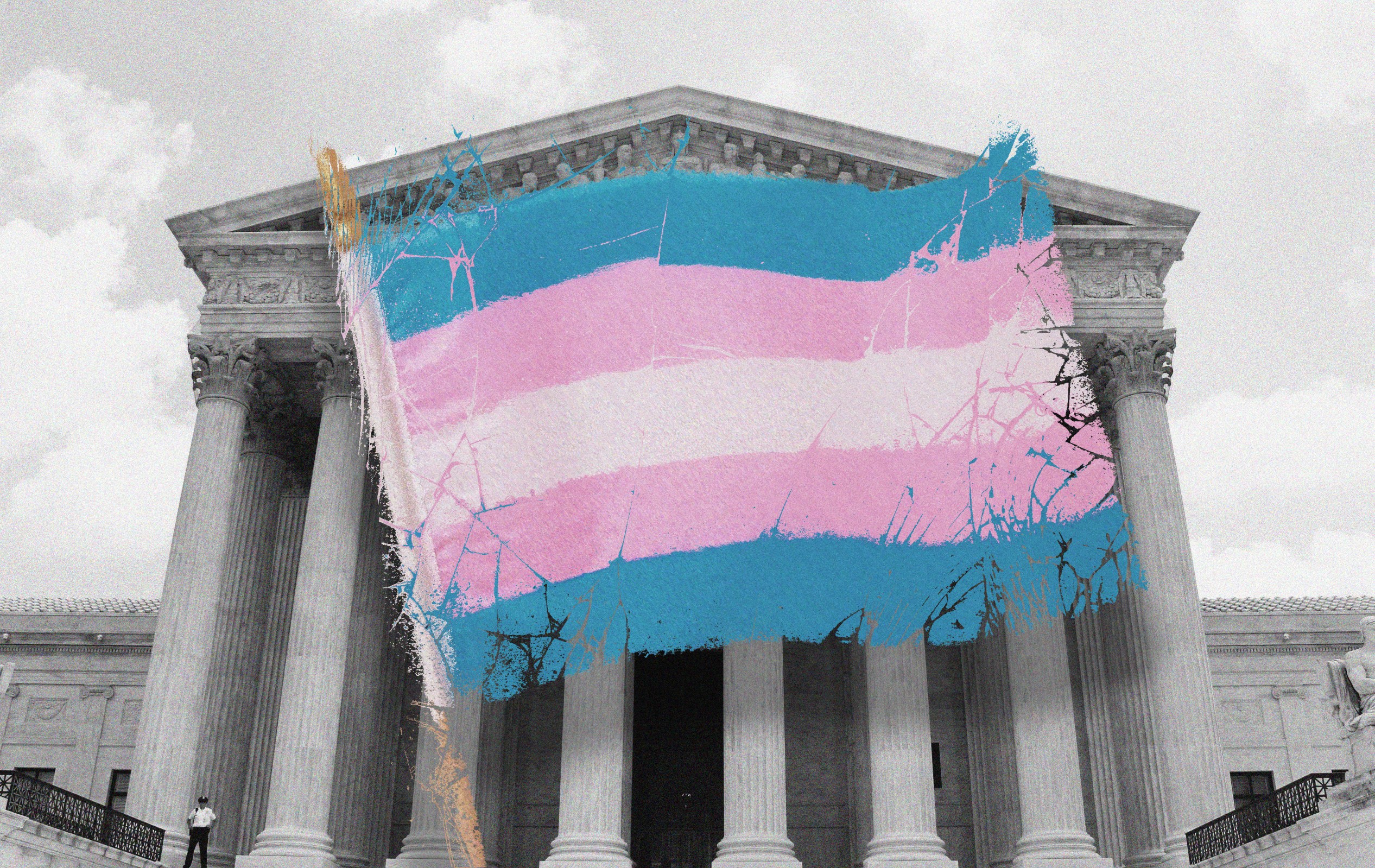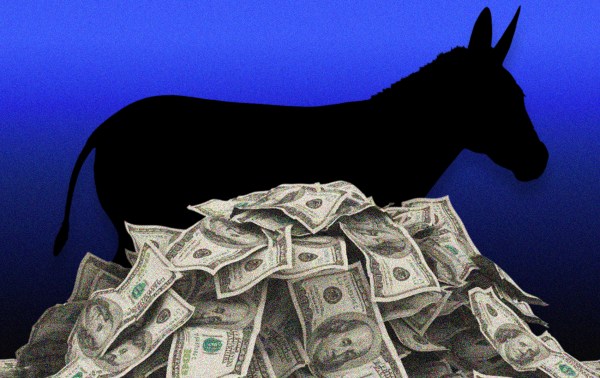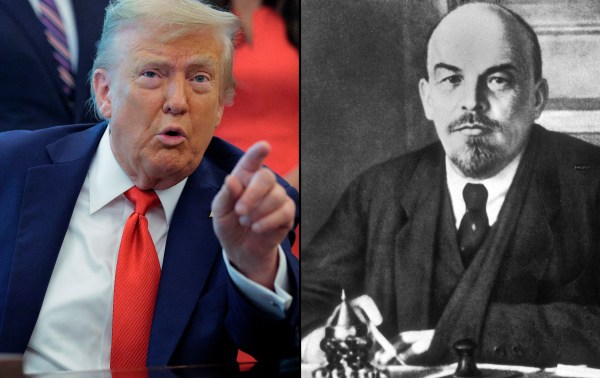The American LGBT movement has had a devastating couple of weeks when it comes to both its goals and its reputation. The first blow concerned United States v. Skrmetti, a case challenging the constitutionality of a Tennessee law, SB1, which outlawed anyone under 18 from receiving puberty blockers, hormones, or surgery to help them transition their sex.
While the case was brought by three minor plaintiffs and their families, the Biden administration and the American Civil Liberties Union (ACLU) joined early on. Between the high-profile nature of the participants and the stakes—the very fate of youth gender medicine in red states—this was a blockbuster case. And in an unsurprising result, the conservative majority upheld the law, 6-3, in a decision released on June 18.
The next day, the New York Times Magazine published a truly damning exposé arguing that this loss was at least partially self-inflicted by the LGBT movement. The article, written by Nicholas Confessore, was headlined “How the Transgender Rights Movement Bet on the Supreme Court and Lost,” and it painted a picture of a movement that has, at least in recent years, done an exceptionally poor job of making persuasive arguments and sound tactical decisions.
He writes:
In private meetings of L.G.B.T.Q. legal-advocacy groups, many lawyers expected a loss almost from the moment the court agreed to hear the case, according to one person briefed on the conversations. On the outside, I heard rising criticism of the strategic and political judgments animating the A.C.L.U.’s litigation — muted by fear that voicing those criticisms more openly, amid the depredations of Trump’s second term, would only give the right more ammunition. “There are a lot of conversations happening right now,” said Dana Beyer, a physician and longtime trans activist in Maryland. “People know the movement is stuck. They know we’ve gone too far. They know we’ve lost the thread.”
I’ve been reporting on the youth gender medicine debate off and on for almost a decade, writing about it for major outlets (including this one). Confessore’s reporting tracks with my own experiences. In recent years, I’ve found, the activist groups and journalists advocating for youth gender medicine and for trans rights more broadly have exhibited a marked inability to make cogent arguments, a penchant for alienating allies, and a general level of dysfunction and divorce from political reality that is hard to fully grasp (even if Confessore’s article marks an excellent start).
Before I go any further, I should note that I’m a bit biased here; I’m writing about groups that have, in some cases, called me out for my own alleged transphobia, and I am still listed on a GLAAD website because of that supposed transphobia. I’m also biased because I’ve been extremely frustrated, most recently, at how groups like GLAAD have treated other journalists; the organization orchestrated a genuinely calumnious campaign against a group of Times reporters who have done truly excellent, careful, compassionate work on this subject.
The ACLU, for its part, has reflexively adopted the maximalist position of full self-ID (your sex is what you say it is) on all sorts of issues—not just on youth gender medicine, but also on trans women in sports, prison, and locker rooms—that require sensitivity and compromise, not self-righteous dogmatism. And it has both litigated and advocated for positions on these matters that are well out of line with the average American’s views.
At the national level, none of this has worked: none of the browbeating, none of the language policing, none of the attempts to “re-educate” the public about sex and gender. If you’re one of the small number of Americans in favor of full self-ID, you should be asking whether your cause would be in a better position if GLAAD and the ACLU had simply taken its last decade worth of donations and thrown the money into a pit somewhere, rather than do what they’ve been doing. These cascading failures are a clear example of what happens when activist groups get high on their own supply and stop trying to convince the public, and when their members succumb to the so-called “iron law of institutions”—a tendency to act in a manner that promotes their own own in-group status rather than their group’s external goals.
It wasn’t always this way.
Confessore’s article explores a “profound generational and political transformation within the L.G.B.T.Q. movement.” In the run-up to and wake of the 2015 Obergefell decision that legalized gay marriage nationwide—a profound victory for LGBT activists—“movement leaders faced pressure to shift their focus to trans people, long the coalition’s junior partners,” Confessore wrote. This ushered in the present age of LGBT activism, which is focused almost entirely on trans rights, and which—as Confessore notes—has pushed the aforementioned maximalist approach, premised on the idea of a core human right to define one’s sex for oneself, and to have society respect that definition.
The differences between these two iterations of the LGBT movement are hard to miss. I came of age politically during the fight over gay marriage. It was the first domestic cause I felt strongly about, and the logic behind it seemed airtight. The ask being made by the LGBT community was, in effect, for gay men and women who wanted to marry one another to simply be left alone. To mount meaningful moral arguments against this was to enter into strange territory, such as to argue that “God created Adam and Eve, not Adam and Steve” (irrelevant if you believe in the separation of church and state) or to conjure slippery slopes involving marriages not between man and man, but between man and beast. There was very little substance to these counterarguments, and this fact can partly account for Obergefell: Outside of religious settings, there is not a great deal of moral complexity when it comes to gay marriage; it does not involve deep discussions about ethical tradeoffs and the value of human life in the way that, say, abortion or medical assistance in dying do.
The LGBT movement isn’t any one thing; like any other big-tent group, it has always had its internecine disputes. At one end are conservative integrationists like Andrew Sullivan (that’s the term he prefers), and at the other are radical types who, as Confessore puts it, have “sought to deconstruct assumptions about what was normal—to dismantle bourgeois institutions, not seek inclusion in them.” And I would argue that the LGBT movement won its recent victories in part due to the power of the integrationist camp.
But now, the radical types have surged to the forefront. One of them is the main character in Confessore’s piece: Chase Strangio, the star ACLU attorney who made history during Skrmetti by becoming the first openly trans person to argue before the Supreme Court. Strangio, who identifies as a male, “doesn’t believe in the Constitution,” describes marriage as a “fundamentally violent institution,” and doesn’t think there’s such a thing as a “male” or “female” body in the first place.
Strangio reached such a perch because the present iteration of the mainstream LGBT movement, perhaps emboldened by its successes with gay marriage, has lately come to favor this sort of boundary-pushing. “In the wider culture,” Confessore reported, “concepts of gender were becoming dizzyingly capacious, even confused. Challenging the idea of a rigid male-female binary, academic theorists detached gender from sex entirely, then reimagined it as an infinite spectrum.” It would be one thing if this stuff stayed on campuses or online. But there ended up being very little daylight between the weirdest claims about sex and gender on TikTok or Bluesky, the demands of major activist groups, and in some cases, the policies of certain blue-state governments themselves.
If LGBT activists were ever going to convince the American public that 13-year-old children should have near-unquestioned medical autonomy, that male rapists who have not fully transitioned should be housed in women’s prisons, that males should compete against females in competitive sports from high school on, and that human sex isn’t straightforwardly binary, it was going to take some strong and genuine efforts at persuasion. Humans tend to have very strong and deeply felt intuitions about biological sex, simply because every adult is keenly aware of its ramifications. Even a social conservative who has some level of disgust for homosexuality can understand, and maybe eventually accept, a libertarian argument for gay marriage. But the arguments the contemporary LGBT movement has chosen to stake its political capital on represent not an attempt to move the ball 10 or 15 more yards down the field, but to play an entirely different sport, with an entirely different set of (rather byzantine) rules. And all too often, what passes for discourse among LGBT activists and their allies amounts to yelling at the spectators for not understanding the rules rather than explaining the new sport and making an affirmative case for why it should be played.
I’d go back to the campaign against the Times reporters as a prime example: Katie J. M. Baker, Azeen Ghorayshi, and Emily Bazelon all published careful, in-depth work that examined the new claims being made by LGBT rights groups, presented the different sides of the arguments, and treated trans people themselves with the utmost respect. They were met not with “Thank you for taking this seriously—here’s some stuff we disagree with” by groups like GLAAD, but with the sort of reputational napalming one would normally reserve for an outright Nazi. GLAAD famously even parked a truck, emblazoned with the phrase “Stop questioning trans people’s right to exist & access to medical care” outside the Times building. (“The science is settled,” a laughably false claim, was on the truck as well.)
The trans rights movement needed an Andrew Sullivan type, and instead it got Chase Strangio. Whether or not you agree with Sullivan, it’s undeniable that the average American can read one of his columns, understand it, and rarely feel like Sullivan is making wild leaps of logic or accusing them of bigotry for not accepting his arguments. The same is not true of figures like Strangio.
In the absence of a Sullivanesque figure, the LGBT movement could only offer bizarre mantras, pretzel-like logic, and, frankly, lies in defense of an agenda that became genuinely radical. (I say that as someone who thinks the term “radical” is chronically overused, such as when it is applied to politicians like Barack Obama or policies like, well, gay marriage.) The example that always stuck with me—because it was so silly—concerned the sports question and went something like this: “Who said sports are fair? LeBron James has a competitive advantage over less athletic basketball players, but we don’t ban him.” This, of course, misses the entire point of why we have a women’s category in the first place.
Silly as these arguments were, anyone embedded in liberal professional or social circles who questioned them was going to have a very bad time. Within liberal communities, a culture of pluralistic ignorance set in, obscuring the fact that even many Democrats are opposed to the positions held by mainstream liberal institutions and, in some cases, pushed by the most recent Democratic administration. In polling published this past January, for example, Ipsos and the Times found that, among those who identify as Democratic or Democratic-leaning, 67 percent believed trans girls and women should be banned from female sports, and 54 percent believed no one under 18 should have access to youth gender medicine. Only 19 percent of respondents believed 10 was old enough for kids to go on puberty blockers.
Still, one of the movement’s extremely silly arguments got all the way to SCOTUS. I’ll leave the details to The Dispatch’s in-house experts, but to win the case, the plaintiffs in Skrmetti first had to convince the court that Tennessee was engaging in sex discrimination: that the law treated kids differently based on whether they were male or female. The thinking went that under SB1, male children might be allowed to take testosterone for delayed puberty, but female ones might not be allowed to do the same to go through a partial male puberty of their own—and this therefore amounted to discrimination on the basis of sex.
The conservative majority swatted this argument away rather effortlessly. The governing variable in this case was not treatment on the basis of sex, argued Chief Justice John Roberts, but rather treatment on the basis of medical condition. That is, under SB1 in Tennessee, male and female minors are similarly barred from receiving endocrinological interventions to treat gender dysphoria, and equally allowed to receive them to treat other conditions, like early puberty, late puberty, or hirsutism.
Whether or not you agree with the outcome, the sex discrimination claim—a mainstay of activists on X and Bluesky, I would add—was very unlikely to fly, because it just didn’t map neatly onto reality or the legislative text being scrutinized. Throw a conservative majority into the mix, and it’s hard to disagree with the assessment of Confessore’s sources that this case was always a doomed enterprise for the ACLU and Biden administration.
In fact, the case was something of a buffet of failed but viral claims bouncing off the conservative justices, reality, or both. For example, LGBT activists have endlessly claimed, without anything resembling solid evidence, that youth gender medicine saves lives by preventing adolescent suicides. This claim not only found its way into top medical journals, but was also disseminated by the Biden administration itself via Rachel Levine, a trans woman who served as assistant secretary for health and the White House’s chief cheerleader for these treatments.
As Confessore writes:
In March 2022, as Alabama’s ban was winding through the Legislature, Levine’s office issued a fact sheet asserting that the treatments had proven clinical benefits for children and adolescents. That April, in a speech urging doctors to fight the bans, Levine seemed to go further, claiming that gender-affirming care broadly was “suicide-prevention care. It improves quality of life, and it saves lives. It is based on decades of study. It is a well-established medical practice.”
But because there has never been anything substantive to these claims, Strangio was forced to concede during oral arguments that “there is no evidence that this treatment reduces completed suicide.” You can repeat false claims over and over on social media and in other contexts where there’s no one around to meaningfully rebut you. But it’s a lot harder to do that in front of a panel of mostly skeptical Supreme Court justices. Maybe there’s a lesson there about effective arguments?
The good news is that treating trans people with respect and dignity does not require adopting the most radical claims of the contemporary trans movement. While polling of trans people is scarce, I’ve found in my reporting that trans people are themselves rather divided about issues like full-blown self-ID and youth gender medicine, and I’ve spoken with plenty who believe that the mainstream movement has lost the plot. (On average, I would wager that older and younger trans people have different views on these issues, as do those who have versus haven’t sought major medical interventions. For understandable reasons, these arguments are often kept out of public view.)
Gender dysphoria is real and causes real distress; anyone who experiences it deserves the utmost compassion (not to mention the best available science). But this issue is more complex than the LGBT fights of yesteryear; it does necessarily entail tradeoffs and fraught discussions. While there is plenty of room for conversation, education, and compromise, activists will continue to hit dead ends unless they can make their case to the public in a clear, coherent way that doesn’t require adopting complex, academic notions of sex, gender, and gender identity that come across as strange—or simply false—to many people.
It will be very interesting to see what the ACLU, GLAAD, and the other groups do in response to their recent failures. Part of what’s vexing about all this is that the Strangios of the world seem to be rewarded for their failures—Strangio has been the subject of multiple glowing profiles and interviews, a hagiographic-looking documentary, and the other perks of stardom. By presenting as a member of the radical, burn-down-the-old-order vanguard, he enjoys immense perks.
But does this stance actually help Strangio’s movement win? It certainly doesn’t seem like it.










Please note that we at The Dispatch hold ourselves, our work, and our commenters to a higher standard than other places on the internet. We welcome comments that foster genuine debate or discussion—including comments critical of us or our work—but responses that include ad hominem attacks on fellow Dispatch members or are intended to stoke fear and anger may be moderated.
With your membership, you only have the ability to comment on The Morning Dispatch articles. Consider upgrading to join the conversation everywhere.